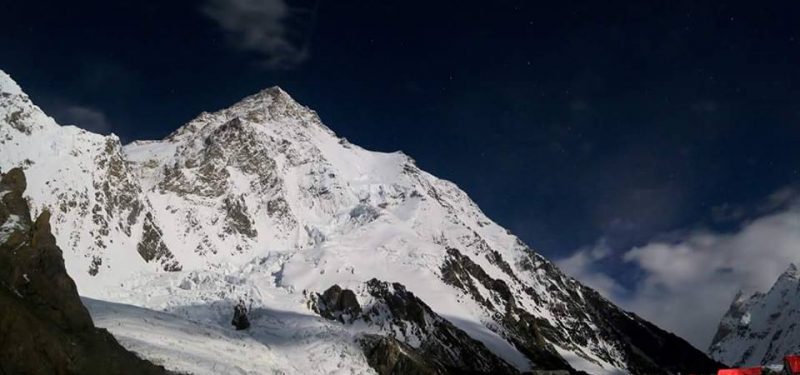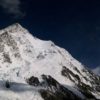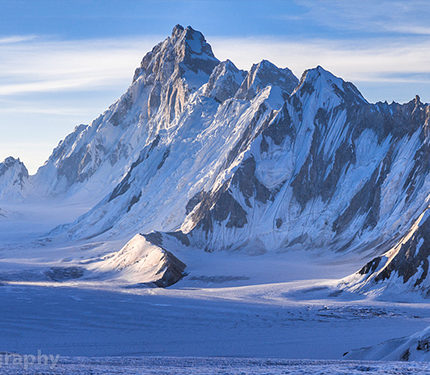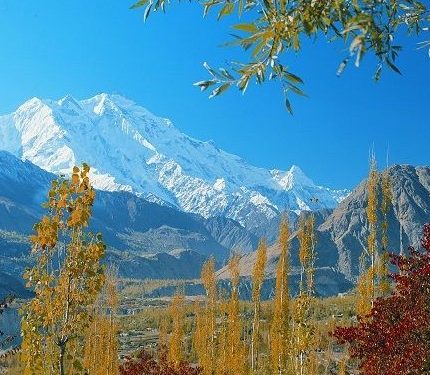Skardu, Pakistan
K2 and Gondogoro La Trek
22 Days
Join Karakorum Expeditions for a 22-day trek to K2 and Gondogoro La, starting with your airport pickup in Islamabad. We’ll transport you to Skardu, then drive to Askoli to begin your trek. Enjoy ample rest between destinations. Traverse the breathtaking 5550-meter Gondogoro La, with the option to rest at Concordia, offering stunning views of K2, Broad Peak, Gasherbrum I, and II. Our experienced team ensures a memorable trek, handling all logistics. Contact us to book your adventure to K2 and Gondogoro La today.
Altitude
5585m
Group Size
12-15 People
Grade
Medium
Walking
6 – 8 Hours
Available Tours
Start Date | Name | Price | Group Size | Book |
20th July, 2025 | K2 Basecamp & Gondogoro La Trek | $2,800 | 12-15 People |
Detail about the package
What's included
- Day 1. Meet our guide(s) at the Islamabad Airport Our full-board service package for Gondogoro La Trek begins only after arrival in Pakistan. After airport transfer, there would be plenty of time before lunch to relax at the hotel. Most of the international flights will arrive during the morning. All team will meet for lunch that would end with a briefing about our trek/expedition and a question-answer session. This shall be followed by a short visit to Tourism Ministry of Pakistan for an official and mandatory briefing about traveling to the northern mountains. Meanwhile our team will complete the necessary paperwork.
- Day 2: Early morning air / road travel to Skardu town (2500m) Sightseeing during the day. The one hour “subject to weather” flight from Islamabad offers a lot. The stunning route the flight takes goes through major Himalayan mountain range and one can enjoy breathtaking views of world’s 9th highest peak, Nanga Parbat peak (8126m). Before landing the majestic K2 and other known peaks in the area would visible if we are lucky. Some might even be able to spot a part of the K2 Gondogoro La Trek route. After check in at our hotel, the day will be spent visiting Bazar, historical forts, scenic lakes or visiting ancient rock inscriptions, one of which is of 8th century Manthal Buddha Rock that shows traces of Buddhist monks and pilgrims who had influence in the area before Islam.
- DAY 3: Jeep Safari to Askole (3000m) Via Shigar Valley A 7 hours jeep ride to Askole village, crossing the cold desert to Shigar valley first. Askole is small village with few houses in a solitary street. The last two hours drive through Braldu Gorge was once a 2 days trek before the jeep road. In few places the road is intersected by some streams thus only off-road vehicles are considered for this journey. The roads are fragile to landslides due to melting glaciers and thus might require starting the trek a day earlier but this rarely happens. If we reach Askole as per schedule the first night will be spent in the village under the beautiful sky along the rumbling Braldu River.
- Day 4: First Day of Trek towards Korofon (3075m) Our first trek for Gondogoro La Trek begins from Askole which is the last inhibited village on the route to Concordia. We will pass across the local Balti people as they go by their work in their fields which is quite fascinating. We will trek to the foot of Biafo Glacier, world’s 3rd longest glacier outside polar region and which also is a door leading to the Hispar pass (and snow lake) connecting Baltistan region to Hunza valley. The snow river at the glacier’s foot is stretched 63 km which has a bridge, without which we would have to cross the glacier which is boulder and rubble at the bottom. The campsite Korofong (3,075 m) lays across the glacier’s other foot. The trees here are habitat to a variety of beautiful birds.
- Day 5: Trek Via Panma Valley to Jhola Campsite (3100m) From Korofong we will be started gaining altitude and follow Braldu course till we reach Panma River which is crossed taking a detour through a trail built on the face of the cliff. Before this trail, trekkers would climb giant cliffs and boulders in order to cross the high velocity river to continue the trekking journey. We go through the locally operated toll “suspension” bridge under the government license. Beyond this bridge is our camp site called Jhola
- Day 6 : Trek to Paiju (3420m) Through Braldu valley Continuing the path returning to Braldu River. The trek goes on to a narrow path along the river’s edge and then climbs to higher area from where we will view the remarkable Paiju Peak. There would be few streams to settle, thus we would wear the sporty boots. From high points today we will view Baltoro Glacier, peaks of Cathedral group and Trango towers. Continuing the trek to the central Braldu we walk on to the trek’s acclimatization site at Paiju. Acclimatization at this point on the Gondogoro La Trek is essential because ascending too high too hasty can lead to altitude sickness.
- Day 7: Acclimatization and rest at Camp Paiju ( 3420m) Before heading for Concordia, Paiju camp has been designated as the acclimatization point located at the foot of Baltoro glacier where Braldu valley widens. This is a significant staging point during Gondogoro La Trek with availability to spring water. This camp has facilities such as long drop toilets, wash basins and a bathroom. This whole day is designated for acclimatization and the porters also bake breads for the climb up over the glacier. Those with spare energy, a great hike above the camp can be a very good exercise and opportunity to view the group of Cathedral Peaks, the stunning Trango towers and also K2 on a lucky day with clear sky.
- Day 8: Start of Baltoro Glacier Trek ,Walk to camp Khoburtse (3795m) A trek from Paiju leads upstream to Baltoro Glacier from where the melting water outpours into the river. We ascend and walk on top of the glacier that is rubbles and rocks. The team follows the traditional trails here but it will be a tough walk on the mighty glacier. The team will create our path through Baltoro glacier and towards the south side pursue the moraine trails. We head east to continue along the glacier till we get to the glacier’s smaller side. Here we move towards South till we make crossing to enter the valley. We reach by night to camp Khoburtse. Magnificent views of Cathedral towers group, Trango towers, and Uli Biaho tower can be enjoyed after a great trekking day. Baltoro Glacier Trek can be demanding for many participants on the first day.
- Day 9: Baltoro Glacier Trek Views of Trango Towers.Camp at Urdukas (3900m) Considering the increase in sleep altitude and being wary for all participants, we have a short trek day. We will continue alongside the glacier, sometimes on it or above the moraine. We pass by the Trango tower and the lonely peak “unnamed tower” to our camp. This day’s campsite was found and cleared by the K2 expedition by Duke of Abruzzi in 1909. The team will climb around hundred meters higher than the glacier to the terraces where the campsite is located. It offers a mesmerizing view of the Lobsang, Trango Towers, cathedral group etc. We will reach here to have delayed lunch and spend the day resting. Gondogoro La Trek begins to pay off, providing grand views from Urdukas camp.
- Day 10 : Baltoro Glacier Trek .Trek to Goro Camp (4295m) sights of Mashbrum Peaks Having enough rest at Urdukas we move eastward along the moraine till the point where we climb on the mighty glacier. We will go the glacier’s centre through a smooth flow and we will be able to view Masherbrum (7821m). Going over and around the rubble on the mighty glacier, continuously descending and ascending, we will eventually reach to witness peaks surrounding Concordia and the great Gasherbrum IV (7925 m) staring down at us and behind us still visible are the Trango tower and the Cathedral peaks while we move towards camp ‘Goro’ (4,295 m). Sleeping at high altitude on the mighty Baltoro, it is essential to stay warm especially at nights.
- Day 11 : Baltoro Glacier Trek to Concordia(4500m) Baltoro glacier trek to Concordia offers the greatest spectacles of the Gondogoro La Trek. We continue our walk on the mighty Baltoro while participants pass by Mustagh Tower (7,284 m) and Gasherbrum IV, partially obscuring behind it the Gasherbrum I (8,080 m), thus called “Hidden Peak”. We can spot it on the right side of Gasherbrum IV with fin like ridges. Making our route up on Baltoro, views of Broad Peak (8051 m) appear while Marble and Crystal Peaks appear on the left. We will be surrounded by 4 eight-thousanders, 10 out of 30 highest peaks of the world. Camp will be set at 4,500 m in Concordia on the moraine.
- Day 12: K2 Base camp (5100m) and Broad Peak Base camp (4800m) We can start early through crevasses and small rivers created by melting ice. We follow on the glacier that is named after Godwin Austin who first declared K2’s height. After three hours we will be at Broad Peak base camp where we will have a great sight of the astonishing Karakoram 2nd (K2), Mitre Peak behind us and the Bride Peak. We walk on the moraine which is mostly boulders. However we do walk on ice occasionally. After another 3 hours trek, we shall complete one way journey of the K2 Base Camp reaching a moraine safe zone, a traditional base camp area for K2 climbers.
- Day 13: Trek Towards Ali Camp (4800m) Chasing Baltoro’s uppar Part We set out journey on a less explored route today. The nature and difficulty of trekking depends on snow which is not common between the months of June to late August. Normally we would walk on non-slippery ice which is in fact easy to hike on. In case of large crevasses, we would take short detours only to make progress. However in case of snow conditions at Baltoro, participants and porters would walk together (all hooked to a rope) and use their crampons for safety. After walking for more than 5 hours, we should reach the junction point of Baltoro with West Vigne Glacier that is linked to Gondogoro La’s base. We set camp for tonight on the high moraine near the junction. Our campsite is known as “Ali Camp” as Ali (a porter belonging to nearby village) had first been recorded to cross Gondogoro La while returning as a porter from a climbing expedition to Gasherbrum.
- Day 14: Gondogoro La Trek-Crossing the Gondogro La/Pass (5585m) towards Khuspang On this day of Gondogoro La Trek, team members are woken up sooner than first light. After a good breakfast, harnesses and crampons are put on and we hit the incredible West Vigne Glacier, all roped as one unit until we make to Gondogoro La’s base. Depending on weather and snow conditions on the lower slope of the high pass, we may possibly continue as one unit attached to the rope or we might be in a position to ascend the slope un-roped. Normally there would be at least one steep part to cross on the higher slopes. During these parts of the climb, our support crew will fix ropes. It normally takes around three hours to reach the top of Gondogoro La Pass. One can have a splendid view of four of the 8,000 meter peaks, specifically Gasherbrum 1 and 2, Broad Peak and the mighty K2. Participants will need to watch their every step while descending to avoid jolting stones into their team members. Once the gradient eases, we get to a trail running along the beautiful Gondogoro valley above Trinity Glacier that we meet soon. Gondogoro La Trek eventually becomes easy as we reach and move on the moraine and arrive at a valley with small pools and grass near the junction point of Gondogoro and Trinity glaciers. This pleasant campsite is called Khuispang (4,600 m).
- Day 15:Walk to Dalsmpa (4150m) Via Gondogoro Glacier Today we pursue the Gondogoro glacier downwards and it will comparatively be an easy day on the Gondogoro La Trek. Normally we would pack our climbing equipments while descending towards Hushey valley and witness fresh landscapes. Participants trek on Gondogoro glacier’s moraine, walk below and cross Laila Peak. We continue and reach an edge of Gondogoro Glacier and find a trail into a beautiful valley of rhubarb and grass. We set camp at a gorgeous location known as Dalsampa (4,150 m).
- Day 16: Trek to Saicho (3350m) through Gondogoro Valley The team starts off trekking through this amazing valley where participants camped last night. They valley soon comes to a sudden end where we are left with two options of trail. The first option is to trek down between cliffs and the glacier. The second option is to move forward on the cliffs. Our guide will make a decision based on discussion with local porters who trek more frequently and are aware of recent conditions on at least one of these routes. Gondogoro La Trek becomes easy once both these trails meet. We continue trekking and pass through the pastures of Gondogoro. One can see temporary shelters made of stones by herders. Soon a little stream requires to be crossed before reaching the lateral moraine. One can observe big trees while walking on this moraine that goes down until the bottom of Gondogoro valley where camp is setup. Our campsite Saicho (3,350 m) is a sandy part with thin grasses along the glacial river at junction point of the Charakusa and Gondogoro valleys. After almost one week below 4,000 m altitude, “oxygen rich” supply of air will be available to breathe and team members can sleep better to the running water’s sound.
- Day 17: Contingency day in case of Possible delays. There can always be a chance for delays at some point during Gondogoro La Trek. It’s always a good idea to keep time for this. Otherwise normally this day would be used for rest at Saicho which is a good camping site to get some sun bath, fill in your diary or do some laundry. Those who still want to explore can trek to Charakusa valley. If anyone opts for this option, we shall make an early morning start and pursue a trail upstream on moraine (lateral) of Charakusa Glacier, a habitat for snow leopard. On a lucky day someone from the team may spot an animal or at least see signs of the big cat which our guides can guide you to. After crossing some ice and rubble, moraine and glacier, we make it to major Charakusa glacier. How far to go depends on when we start, glacier conditions and participant’s energy level. Although if every factor is favorable, we can walk far enough to get views of K7 and K6. It will approximately take 6-8 hrs to make this round trip which is another great extra on the Gondogoro La Trek.
- Day 18: Walk to Hushey’s main village,Last Trekking day Since we are below 3,500 m, it is wise to start trekking early to stay away from heat that can go above 35 degree Celsius. This day will comparatively be an easy trekking day of between 3 to 4 hrs. We will follow the river that brings the glacier melt of Charakusa, Gondogoro, Ailling and Masherbrum glaciers. The valley eventually turns south and gradually participants start to see signs of shelters, homes, fields etc and we finally ascend to a plateau where the central village is located. It will be the last day of camping on Gondogoro La Trek.
- Day 19: Drive to Skardu Following the rivers of Hushey Shyok and the Grand Indus The return road journey offers amazing sightseeing starting with passage through other villages of Hushey valley displaying small agricultural lands and mountain farming activities as we move downstream. We eventually come to the confluence where Shyok river (flowing from Ladakh) meets Hushey river. We will cross a bridge (suspension) above Shyok river to get to the other end. Our drive to Skardu from Khaplu becomes smoother and we gain pace on the paved road driving along the Shyok which leads us to the confluence with Indus River that we follow until we reach Skardu. We arrive at one of our partner hotels and get our first warm shower after more than two weeks, followed by a good meal. Some team members might have dreams about Gondogoro La Trek.
- Day 20: Fly to Islamabad, Sightseeing during the after noon The drive from hotel to airport is 40 minutes and it’s a metal road. We board the plane for a thrilling flight towards Islamabad. We once again fly by the Nanga Parbat. Reaching Islamabad airport after a great adventure is very different experience and takes getting used to. Our vehicle will be at Islamabad airport to take us straight to the hotel. We will settle in and have lunch if there isn’t any unusual delay. After a good meal participants can take the day for rest or sightseeing around the city or shopping for popular options like artifacts or rugs. In the evening we will be together to enjoy special meal at local restaurant or at our hotel and share experiences of Gondogoro La Trek.
- Day 21: Contingency day for Delays in fly schedule Skardu is weather dependent area to fly as planes only operate when there is visibility for the pilot to land. The weather in summer is mostly good for the pilots to fly but mountain weather conditions may change to bring rain. Alternative way is to go by road through the Karakorum Highway which is a great experience for many foreigners. If we fly to Islamabad, the day can be used to rest and for sightseeing. The leaders of the trekking party will guide participants on this day with available options.
- Day 22: Departure from Islamabad,Airport Transfer from Hotel Our land package for Gondogoro La Trek ends only with breakfast and transfer to airport.
- Day 23-24: We will have two extra days for proper Acclimatization
- Important The trek up to Concordia is comparatively simple even though the trail is fairly rugged. The extended Gondogoro La Trek towards Gondogoro Pass however means walking on glacier, rubble, stones and snow at different stages for the coming three days. The walk on glacier and snow climb requires crampons and axe. We will trek between 6 miles to 8 miles every day that can take between 5 hrs to 6 hours during the extended stage. During times when the glacier is concealed with snow, the participants will walk roped together as a team. For crossing the Gondogoro Pass, we will need mountaineering gear including crampons, ice axe, harness and helmet at different stages. We will also use fixed ropes/lines at steep slopes on the pass for the safety of our participants and crew. Our guide/assistant will teach all participants a few basic techniques before making the ascent on the mountain pass. Experience of walking on high altitude is a precondition for the Gondogoro La Trek and a little familiarity with using crampons on snow slopes is highly advantageous.
- Government licensed professional guide/leader (pre-requisite for the Tour)
- Airport transfers on first and last day from/to Islamabad International Airport, Islamabad
- All domestic flights and transfers (according to itinerary)
- All road transport in Pakistan (according to itinerary above)
- All accommodation in Pakistan (hotels and camps) according to itinerary
- All meals in Pakistan (breakfast, lunch and dinner) at hotels
- All tour requirements on ground (including, support staff, (excluding personal) etc
- Government Permits, documentation.
- Travel insurance
- Visa to Pakistan (Letter of Invitation and other supporting documents will be offered by us for visa application)
- International flights (return tickets)
- Tips for guides, porters, staff etc
- Early Wind-up
- Miscellaneous (drinks, telephone calls, laundry etc at hotels)
- Souvenirs
- Things that are not mentioned in Cost Included section
- First Aid Pack (Diamox (Altitude), Dioralite (re-hydration salts), antiseptic cream, blister treatment, throat lozenges, plasters, Imodium (diarrhea treatment), painkillers)
- Hiking Backpack (Day Pack) 32-42 Litres
- Fleece jacket with hood or a warm jumper
- Mittens or gloves
- Gloves (Thermal)
- Headtorch with spare batteries
- Hiking boots
- Sleeping bag (-16°C comfort rated)
- Sandals (sports) or old shoes (to cross rivers)
- Sun protection cream (including total block for nose, lips etc.)
- Sunglasses
- Sunhat
- Thermarest or any similar mat/pad for sleeping
- Warm hat
- Warm jacket (down)
- Water bottles 1 liter (x2)
- Waterproof jacket
- Waterproof over-trousers
- Antibacterial hand wash
- Shirts/T-shirts
- Small towel
- Socks
- Spare laces
- Underwear (normal and thermal)
- Trekking poles (highly recommended)
- Wash-bag and toiletries
- Walking socks (2/3 pairs)
- Baselayer – leggings (Thermal)
- Trekking Trousers
- Baselayer thermal shirts (2 long sleeves, 2 short sleeves)
- Mountaineering equipment (See “List 2” below)
- Crampons
- Mountaineering boots that must be compatible with your crampons. Minimum Grade B2.
- Ice axe
- Climbing harness
- Karabiner/Carabiner (screwgate type x 2)
- Climbing helmet
- Prusik loops X two (2) – (4 meters of 6 mm cord makes up 2)
- Sling (120 cm)
- Buff or scarf
- Small padlock (for locking your bag)
- Camera
- Insect repellant
- Pen-knife (important: pack sharp tools in hold luggage)
- Repair kit (e.g. thread, needle, duct tape)
- Liner (for sleeping bag)
- Travel clothes
- Bottle for Pee
Travel Documents & Visa In order to apply for visas to Pakistan, you generally need a passport expiring later than (6) months. For more reliable and updated information, we suggest you to contact the nearest Pakistani consulate or embassy in your country. We expect that you will take full responsibility for ensuring you have the right travel documents. Normally if you are visiting non-EU countries, you must check for 2 vacant pages in your travel document (passport) for every country you plan to travel. A tourist visa (visit visa) is required to come to Pakistan for trekking. People on work visas (already in Pakistan/abroad) require a No-Objection Certificate (NOC) which normally takes up to 6 weeks. The requirements and fee for tourist visas to Pakistan is normally around 200 USD but for accurate information you should consult Pakistani consulates nearby. To apply for a tourist visa, you will need a Letter of Invitation from our company and sometimes a duplicate (copy) of the “government trekking permit” for the group, processed by us. We will help you with all necessary documents to obtain the visa once you register with us.
For more information please write us at info@karakorumexpedition.com
Dive Deeper or Connect with Us
Let's talk! We're here to navigate your queries and guide you further.
Mountaineering Expeditions
Date | Name | Price | Information | Booking |
23rd June, 2025 | K2 Expedition | $9,200 Starting From | ||
23rd June, 2025 | Broad Peak Expedition | $8,000 Starting From | ||
23rd June, 2025 | Gasherbrum I Expedition | $8,000 Starting From | ||
23rd June, 2025 | Gasherbrum II Expedition | $8,000 Starting From | ||
30th May, 2025 | Nanga Parbat Expedition | $8,000 Starting From | ||
10th August, 2025 | Spantik Expedition | $4,500 Starting From | ||
20th May & | Manglik Sar Expedition | $2,600 Starting From |




